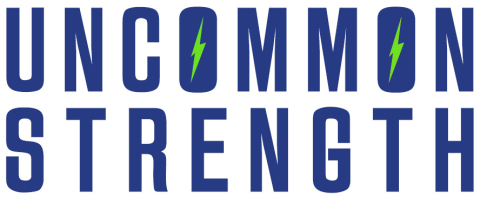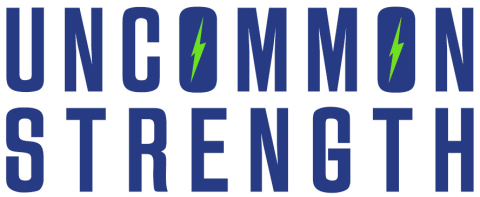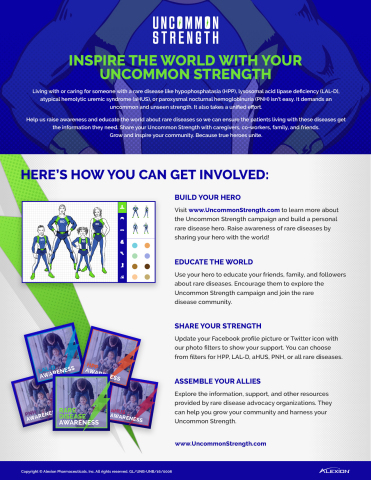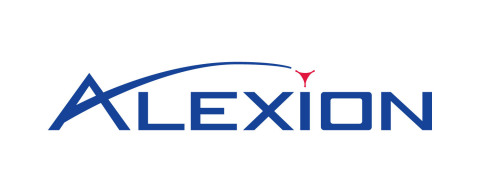NEW HAVEN, Conn.--(BUSINESS WIRE)--Alexion Pharmaceuticals, Inc. (NASDAQ:ALXN) today announced the launch of Uncommon Strength, a global campaign to raise awareness of rare diseases through the celebration of the extraordinary resilience and inner strength of those impacted by these diseases. Uncommon Strength (www.UncommonStrength.com) supports global rare disease communities, including those impacted by atypical hemolytic uremic syndrome (aHUS), paroxysmal nocturnal hemoglobinuria (PNH), hypophosphatasia (HPP), and lysosomal acid lipase deficiency (LAL-D) with educational information as well as interactive social media elements to unite the community.
People living with rare diseases, and their families, must demonstrate “uncommon strength” as they persevere to find answers about their diseases. Reaching a diagnosis for a rare disease can be a long and challenging experience because the conditions are often unknown, misunderstood, or misdiagnosed. In fact, the average time from a person’s first symptom to receiving an accurate diagnosis of a rare disease is nearly five years, during which he or she may visit more than seven physicians.1
“At Alexion, we are inspired by patients and families living with rare diseases and recognize the inner strength and perseverance they must have to face the ongoing challenges they encounter, such as receiving an accurate and timely diagnosis and appropriate medical care,” said David Hallal, Chief Executive Officer of Alexion. “To all of us at Alexion, patients with rare diseases are true heroes, and it is our hope that the Uncommon Strength campaign will amplify their voices and generate the much needed awareness to reach more patients and families who are still seeking answers.”
People impacted by rare diseases, including patients, caregivers, and loved ones, are invited to visit www.UncommonStrength.com to:
- Create a personal aHUS, PNH, HPP, LAL-D, or rare disease “hero avatar” to show their unique courage, strength, and perseverance, and support the rare disease community.
- Share custom hero avatars over social media or e-mail to help generate a broader conversation about rare diseases and inspire people across the globe to learn more and get involved in awareness efforts.
- Update their personal Facebook and Twitter profile pictures with a customized photo filter to spread the word about aHUS, PNH, HPP, LAL-D, or rare diseases in general.
The Uncommon Strength campaign will coincide with upcoming awareness milestones, including:
- September 24, 2016 – aHUS Awareness Day
- September 26 – October 2, 2016 – PNH Awareness Week in the United States
- October 13, 2016 – World Thrombosis Day
- October 24 – 30, 2016 – HPP Awareness Week
- October 2016 – Liver Awareness Month
aHUS, PNH, HPP, and LAL-D are considered ultra-rare diseases, which are defined as diseases that impact fewer than 20 people per million population.2 The Uncommon Strength campaign aims to drive disease education, and inspire and connect the rare disease community to advocate for rare disease awareness locally and globally to ensure people living with these diseases, and their families, have the information they need.
In addition to the campaign’s interactive hero avatar builder application, the Uncommon Strength website features helpful information about aHUS, PNH, HPP, and LAL-D along with access to key resources and advocacy organizations around the world where patients and caregivers can go for support. The following organizations are key supporters of the Uncommon Strength campaign:
-
aHUS
- aHUS Alliance
- aHUS UK
- Atypical HUS Foundation
- Selbsthilfe für seltene komplementbedingte Erkrankungen MPGN und aHUS e.V.
-
PNH
- Aplastic Anemia and MDS International Foundation (AAMDSIF)
- Aplastic Anemia & Myelodysplasia Association of Canada (AAMAC)
- Canadian Association of PNH Patients
- NPO PNH Club
-
HPP
- Children Living with Inherited Metabolic Diseases (CLIMB)
- HypoPhosPhatasia Support Association of Japan (HPPSA-J)
- Hypophosphatasie Deutschland e.V.
- International Coalition of Organizations Supporting Endocrine Patients (ICOSEP)
- Soft Bones
- The MAGIC Foundation
-
LAL-D
- LAL Solace
- AE LALD Spain
-
Latin American Rare Disease
- Federación Colombiana de Enfermedades Raras (FECOER)
- Federación Mexicana de Enfermedades Raras (FEMEXER)
To learn more about aHUS, PNH, HPP, and LAL-D, build your own personal rare disease hero avatar, and help spread awareness by getting involved in the Uncommon Strength campaign, visit www.UncommonStrength.com.
About Atypical Hemolytic Uremic Syndrome (aHUS)
aHUS is a chronic, ultra-rare, and life-threatening disease in which a life-long and permanent genetic deficiency in one or more complement regulatory genes causes chronic uncontrolled complement activation, resulting in complement-mediated thrombotic microangiopathy (TMA), the formation of blood clots in small blood vessels throughout the body.3,4 Permanent, uncontrolled complement activation in aHUS causes a life-long risk for TMA, which leads to sudden, catastrophic, and life-threatening damage to the kidney, brain, heart, and other vital organs, and premature death.3,5 Seventy-nine percent of all patients with aHUS die, require kidney dialysis or have permanent kidney damage within three years after diagnosis despite plasma exchange or plasma infusion (PE/PI).6 Moreover, 33-40 percent of patients die or progress to end-stage renal disease with the first clinical manifestation of aHUS despite PE/PI.6,7 The majority of patients with aHUS who receive a kidney transplant commonly experience subsequent systemic TMA, resulting in a 90 percent transplant failure rate in these TMA patients.8
aHUS affects both children and adults. Complement-mediated TMA also causes reduction in platelet count (thrombocytopenia) and red blood cell destruction (hemolysis). While mutations have been identified in at least ten different complement regulatory genes, mutations are not identified in 30-50 percent of patients with a confirmed diagnosis of aHUS.8
About Paroxysmal Nocturnal Hemoglobinuria (PNH)
PNH is an ultra-rare blood disorder in which chronic, uncontrolled activation of complement, a component of the normal immune system, results in hemolysis (destruction of the patient's red blood cells). PNH strikes people of all ages, with an average age of onset in the early 30s.9 Approximately 10 percent of all patients first develop symptoms at 21 years of age or younger.10 PNH develops without warning and can occur in men and women of all races, backgrounds and ages. PNH often goes unrecognized, with delays in diagnosis ranging from one to more than 10 years.11 In the period of time before treatment was available, it had been estimated that approximately one-third of patients with PNH did not survive more than 5 years from the time of diagnosis.9 PNH has been identified more commonly among patients with disorders of the bone marrow, including aplastic anemia (AA) and myelodysplastic syndromes (MDS).12-14 In patients with thrombosis of unknown origin, PNH may be an underlying cause.9
About Hypophosphatasia (HPP)
HPP is a genetic, chronic, progressive, and life-threatening ultra-rare metabolic disease characterized by low alkaline phosphatase (ALP) activity and defective bone mineralization that can lead to destruction and deformity of bones and other skeletal abnormalities, as well as systemic complications such as profound muscle weakness, seizures, pain, and respiratory failure leading to premature death in infants.15-19
HPP is caused by mutations in the gene encoding an enzyme known as tissue non-specific alkaline phosphatase (TNSALP).15,16 The genetic deficiency in HPP can affect people of all ages.15 HPP is traditionally classified by the age of the patient at the onset of symptoms of the disease. Symptoms can manifest in infants, children or adults.
HPP can have devastating consequences for patients at any stage of life.15 In a natural history study, infants who had their first symptom of HPP within the first 6 months of life had high mortality, with an overall mortality rate of 73 percent at 5 years.20 In these patients, mortality is primarily due to respiratory failure.15,19,21 Regardless of age of symptom onset, long-term clinical consequences include impact on growth and development, difficulties with activities of everyday living (standing, climbing stairs, etc.), recurrent and non-healing fractures, profound muscle weakness, debilitating pain and the requirement for ambulatory assistive devices such as wheelchairs, wheeled walkers and canes.15,18
About Lysosomal Acid Lipase Deficiency (LAL-D)
LAL-D is a genetic, chronic, and progressive ultra-rare metabolic disease associated with significant morbidity and premature mortality.22 In patients with LAL-D, genetic mutations result in a marked decrease or loss in activity of the vital LAL enzyme. This leads to marked accumulation of cholesteryl esters and triglycerides in vital organs, blood vessels, and other tissues, resulting in progressive and multi-organ damage including fibrosis, cirrhosis, liver failure, accelerated atherosclerosis, cardiovascular disease, and other devastating consequences.22,23
LAL-D affects patients of all ages with clinical manifestations from infancy through adulthood and may have sudden and unpredictable clinical complications. Infants experience profound growth failure, liver fibrosis, and cirrhosis, with a median age of death at 3.7 months.24 In an observational study, approximately 50 percent of children and adults with LAL-D progressed to fibrosis, cirrhosis, or liver transplant in 3 years.25 The median age of onset of LAL-D is 5.8 years, and the disease can be diagnosed with a simple blood test.26,27
About Alexion
Alexion is a global biopharmaceutical company focused on developing and delivering life-transforming therapies for patients with devastating and rare disorders. Alexion is the global leader in complement inhibition and has developed and commercializes the first and only approved complement inhibitor to treat patients with paroxysmal nocturnal hemoglobinuria (PNH) and atypical hemolytic uremic syndrome (aHUS), two life-threatening ultra-rare disorders. In addition, Alexion’s metabolic franchise includes two highly innovative enzyme replacement therapies for patients with life-threatening and ultra-rare disorders, hypophosphatasia (HPP) and lysosomal acid lipase deficiency (LAL-D). Alexion is advancing the most robust rare disease pipeline in the biotech industry with highly innovative product candidates in multiple therapeutic areas. This press release and further information about Alexion can be found at: www.alexion.com.
[ALXN-G]
References
| 1. |
Engel PA, Bagal S, Broback M, Boice N. Physician and patient percepts regarding physician training in rare diseases: the need for stronger educational initiatives for physicians. Journal of Rare Diseases. 2013;1(2):1-15. |
||
| 2. |
REGULATION (EU) No 536/2014 OF THE EUROPEAN PARLIAMENT AND OF THE COUNCIL of 16 April 2014 on clinical trials on medicinal products for human use, and repealing Directive 2001/20/EC. http://eur-lex.europa.eu/legal-content/ EN/TXT/PDF/?uri=CELEX:32000R0141&qid=1421232987002&from=EN. |
||
| 3. | Benz K, Amann K. Thrombotic microangiopathy: new insights. Curr Opin Nephrol Hypertens. 2010;19(3):242-7. | ||
| 4. | Ariceta G, Besbas N, Johnson S, et al. Guideline for the investigation and initial therapy of diarrhea-negative hemolytic uremic syndrome. Pediatr Nephrol. 2009;24:687-96. | ||
| 5. | Tsai HM. The molecular biology of thrombotic microangiopathy. Kidney Int. 2006;70(1):16-23. | ||
| 6. | Noris M, Remuzzi G. Atypical hemolytic-uremic syndrome. N Engl J Med. 2009;361:1676-87. | ||
| 7. | Noris M, Caprioli J, Bresin E, et al. Relative role of genetic complement abnormalities in sporadic and familial aHUS and their impact on clinical phenotype. Clin J Am Soc Nephrol. 2010;5:1844-59. | ||
| 8. | Bresin E, Daina E, Noris M, et al. Outcome of renal transplantation in patients with non-Shiga toxin-associated hemolytic uremic syndrome: prognostic significance of genetic background. Clin J Am Soc Nephrol. 2006;1:88-99. | ||
| 9. |
Socie G, Mary JY, de Gramont A., Rio B, Leporrier M, Rose C, et al. Paroxysmal nocturnal haemoglobinuria: long-term follow-up and prognostic factors. French Society of Haematology. Lancet 1996 Aug 31;348(9027):573-7. |
||
| 10. | Parker C, Omine M, Richards S, et al. Diagnosis and management of paroxysmal nocturnal hemoglobinuria. Blood. 2005;106(12):3699-3709. | ||
| 11. | Hillmen P, Lewis SM, Bessler M, Luzzatto L, Dacie JV. Natural history of paroxysmal nocturnal hemoglobinuria. N Engl J Med. 1995;333(19):1253-1258. | ||
| 12. | Wang H, Chuhjo T, Yasue S, Omine M, Naka S. Clinical significance of a minor population of paroxysmal nocturnal hemoglobinuria-type cells in bone marrow failure syndrome. Blood. 2002;100 (12):3897-3902. | ||
| 13. | Iwanga M, Furukawa K, Amenomori T, et al. Paroxysmal nocturnal haemoglobinuria clones in patients with myelodysplastic syndromes. Br J Haematol. 1998;102(2):465-474. | ||
| 14. | Maciejewski JP, Rivera C, Kook H, Dunn D, Young NS. Relationship between bone marrow failure syndromes and the presence of glycophosphatidyl inositol-anchored protein-deficient clones. Br J Haematol. 2001;115:1015-1022. | ||
| 15. | Rockman-Greenberg C. Hypophosphatasia. Pediatr Endocrinol Rev. 2013; 10(2):380-388. | ||
| 16. | Whyte MP. Hypophosphatasia: nature’s window on alkaline phosphatase function in humans. In: Bilezikian JP, Raisz LG, Martin TJ, eds. Principles of Bone Biology. Vol 1. 3rd ed. San Diego, CA: Academic Press; 2008:1573-1598. | ||
| 17. | Whyte MP, Greenberg CR, Salman N, et al. Enzyme-replacement therapy in life-threatening hypophosphatasia. N Engl J Med.2012; 366(10):904-913. | ||
| 18. | Seshia SS, Derbyshire G, Haworth JC, Hoogstraten J. Myopathy with hypophosphatasia. Arch Dis Child. 1990; 65(1):130-131. | ||
| 19. | Baumgartner-Sigl S, Haberlandt E, Mumm S, et al. Pyridoxine-responsive seizures as the first symptom of infantile hypophosphatasia caused by two novel missense mutations (c.677T>C, p.M226T; c.1112C>T, p.T371I) of the tissue-nonspecific alkaline phosphatase gene. Bone. 2007; 40(6):1655-1661. | ||
| 20. | Whyte MP, Leung E, Wilcox W, et al. Hypophosphatasia: a retrospective natural history study of the severe perinatal and infantile forms. Poster presented at the 2014 Pediatric Academic Societies and Asian Society for Pediatric Research Joint Meeting, Vancouver, B.C., Canada, May 5, 2014. Abstract 752416. | ||
| 21. | Whyte MP, Rockman-Greenberg C, Hofmann C, et al. Improved survival with asfotase alfa treatment in pediatric patients with hypophosphatasia at high risk of death. Poster presented at the American Society for Bone and Mineral Research (ASBMR) 2014 Annual Meeting, Houston, September 14, 2014. Abstract 1097. | ||
| 22. | Bernstein DL, et al. Chloesteryl ester storage disease: review of the findings in 135 reported patients with an underdiagnosed disease. J Hepatol. 2013;58:1230-43. | ||
| 23. | Reiner Z, et al. Lysosomal acid lipase deficiency – an under-recognized cause of dyslipidemia and liver dysfunction. Atherosclerosis. 2014;235:21-30. | ||
| 24. | Jones SA et al. Rapid progression and mortality of lysosomal acid lipase deficiency presenting in infants. Genet Med. 27 August 2015. doi:10.1038/gim.2015.108. | ||
| 25. | Data on file, Alexion. | ||
| 26. | Burton et al. Clinical Features of Lysosomal Acid Lipase Deficiency - a Longitudinal Assessment of 48 Children and Adults. Journal of Pediatric Gastroenterology & Nutrition. 2015. | ||
| 27. | Hamilton J, et al. A new method for the measurement of lysosomal acid lipase in dried blood spots using the inhibitor Lalistat 2. Clin Chim Acta. 2012;413:1207-10. doi:10.1016/j.cca.2012.03.019. |





